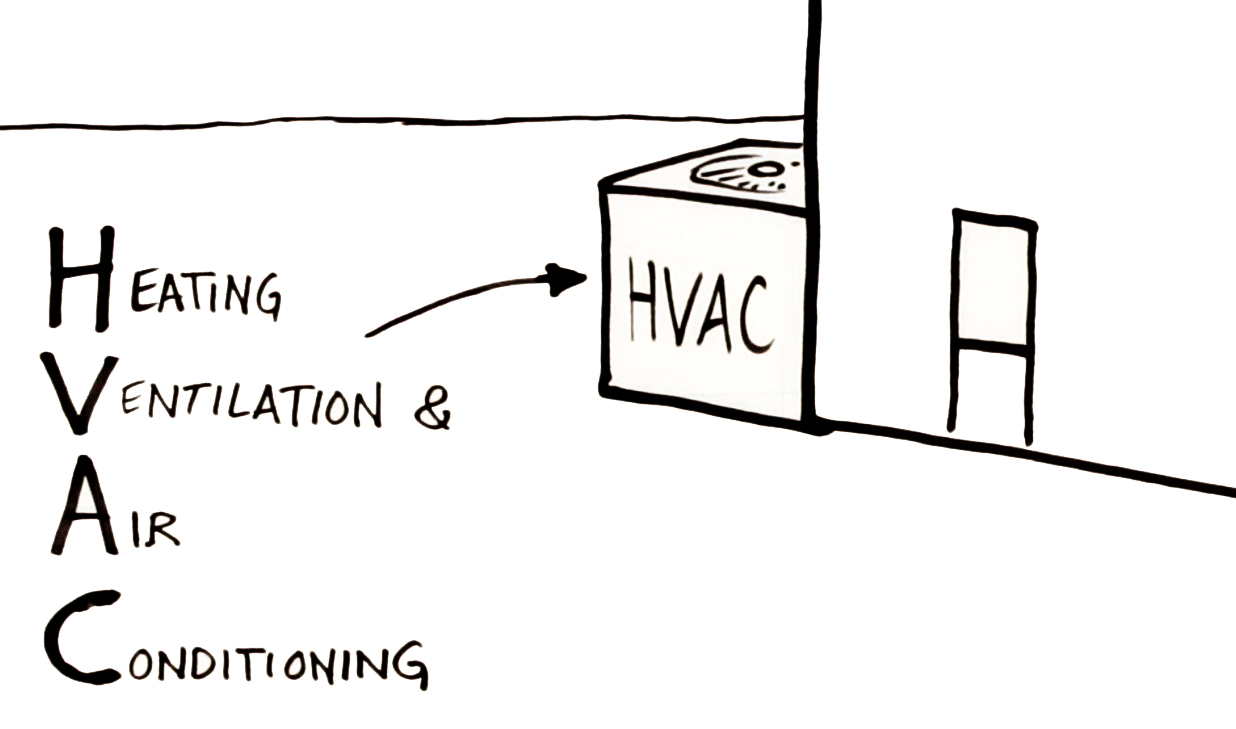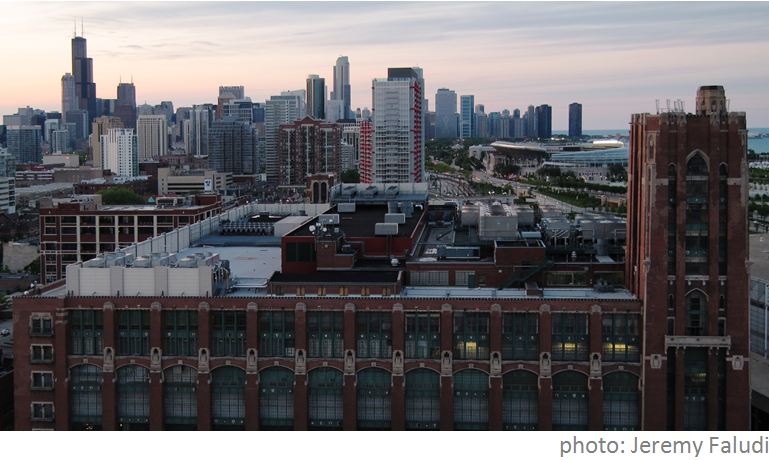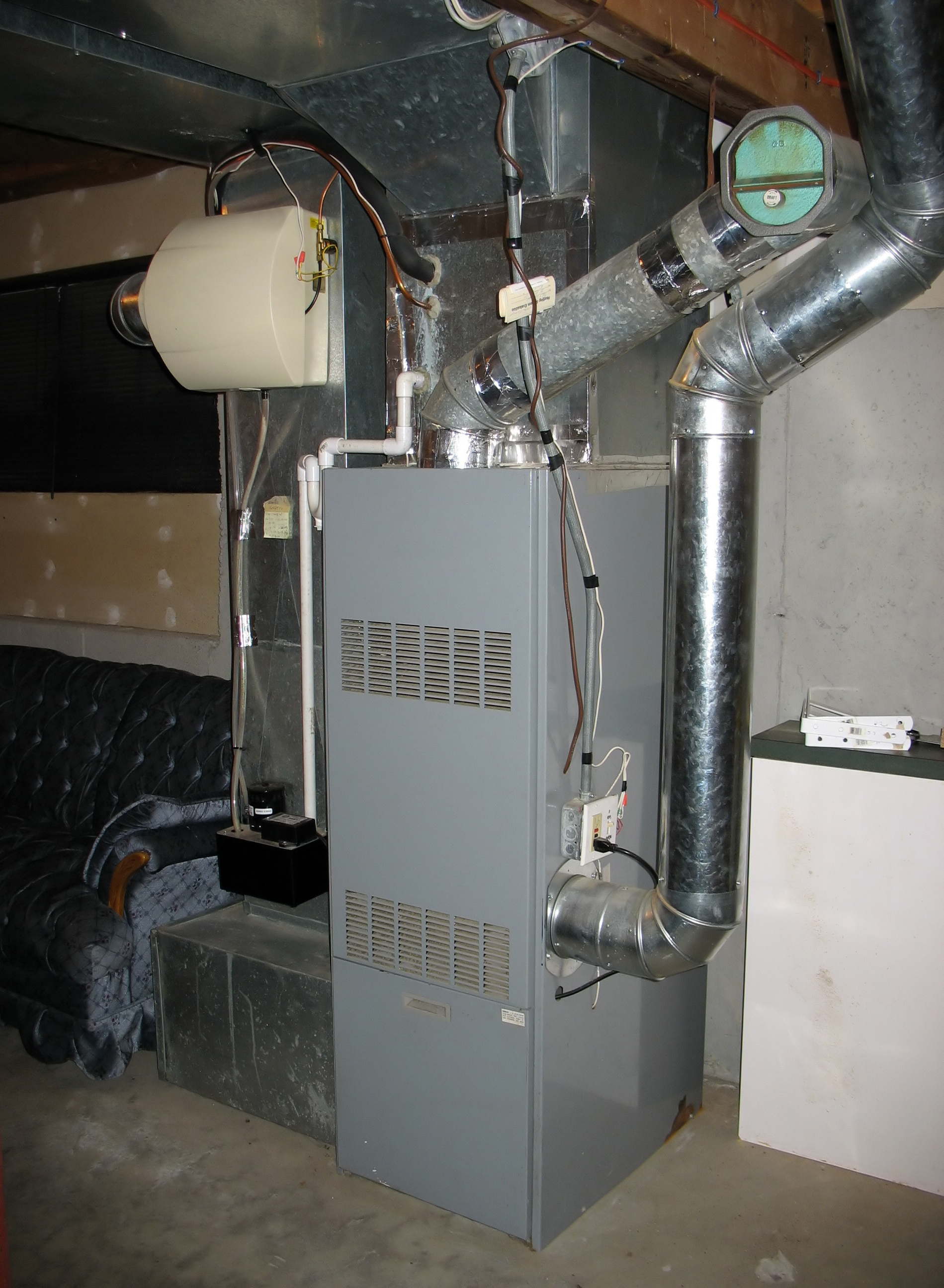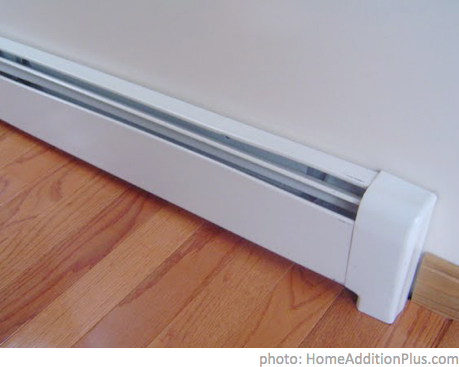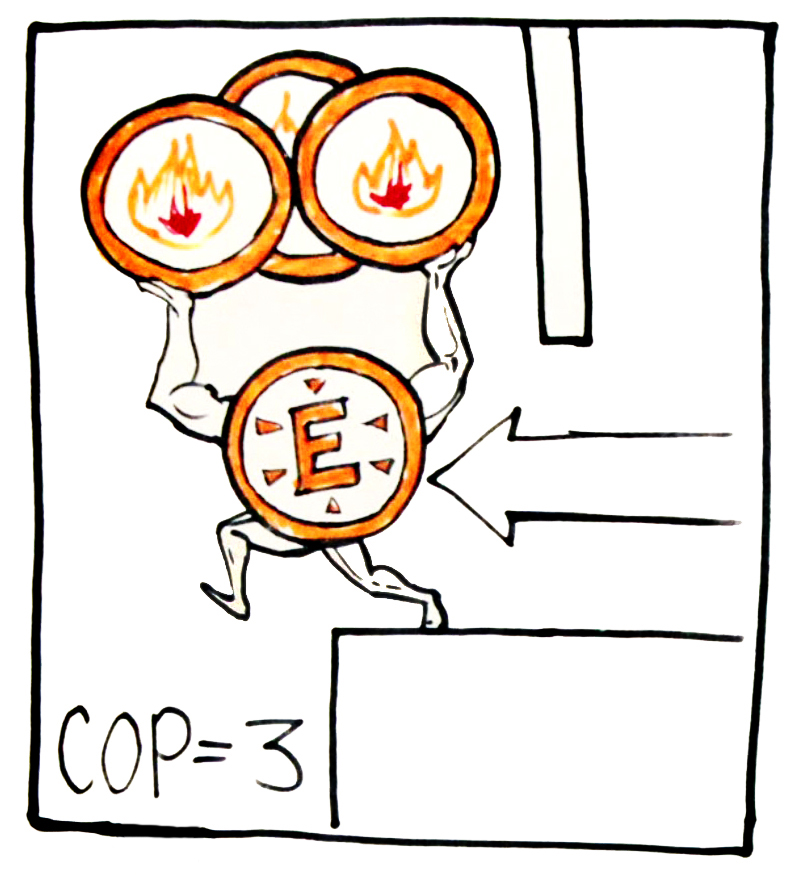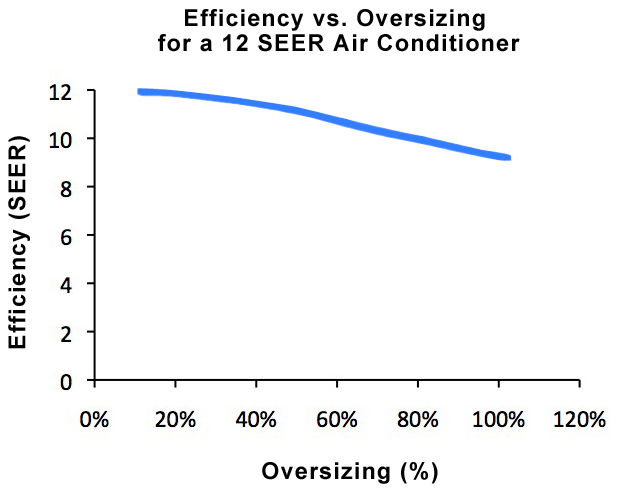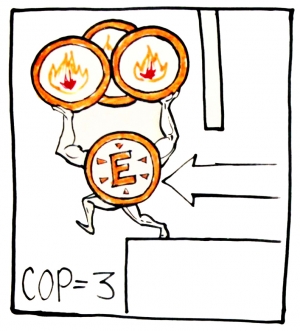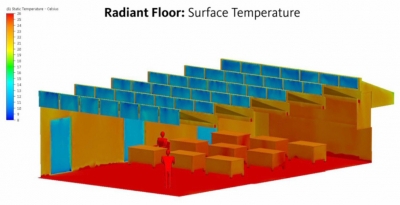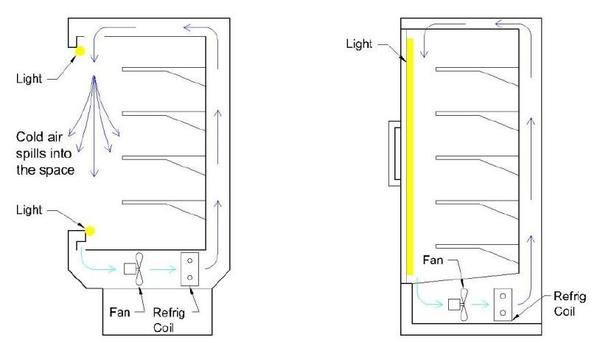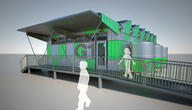You are here
Mechanical heating and cooling uses electricity or burning fuel to achieve thermal comfort in buildings. They are also called HVAC (Heating, Ventilation, and Air Conditioning) systems. They include air conditioners, boilers, chillers, heat pumps, dehumidifiers and humidifiers, radiant systems, and other types of equipment.
Nearly all modern buildings use mechanical heating and cooling. It comprises roughly a third of commercial building energy use. While passive heating and cooling systems can do the most to reduce building energy use, well-designed mechanical systems are necessary for peak performance. Moreover, HVAC systems and passive systems need to work well together to achieve peak performance.
Building with HVAC systems on its roof
When heating a building, heat can either be generated or pumped from outside to inside. When cooling a building, heat can only be pumped from inside to outside, it cannot be annihilated.
To be more accurate, heat is not generated, but converted from chemical energy to heat by burning fuel, or converted from electrical energy to heat through resistive heating. These conversions are easy, but converting heat to other forms of energy requires a large temperature difference that is generally not found in building systems. Hence all cooling in buildings is simply moving heat from one place to another.
Heat Generation Systems
Furnaces and Boilers
Furnaces burn fuel to create heat. While they can directly heat air, they most commonly heat water circulating in a closed loop, which heats the air. Such systems are called boilers.
A residential heating oil boiler
Furnaces and boilers can burn natural gas, "heating oil" (a grade of diesel fuel), wood, or any other combustible fuel. Natural gas provides the least harmful emissions among fossil fuels, but some biofuels can have even less.
To keep indoor air quality high, furnaces and boilers must exhaust the fumes of their burning fuel to the outside air; some of the heat generated by combustion is lost with the fumes. The efficiency of furnaces and boilers is measured in annual fuel utilization efficiency, AFUE. The higher the AFUE, the more efficient the system. For example, a 90% AFUE means that for every Btu of gas burned, the system provides 0.9 Btu of heat to the building and 10% escapes. Old inefficient systems may have as low as 70% AFUE, while modern efficient systems may have up to 97% AFUE.
Electric Resistance Heaters
Electric resistance heaters are simply large resistors that heat up as current is sent through. Baseboard heaters use electricity to heat up air directly; electric boilers heat up water that either heats air or heats a radiant system.
Electric baseboard heater
Electric heaters have no fumes to expel. As such, the core system is 100% efficient at energy conversion. Any AFUE lower than 100% is due to losses in the housing if the unit is located outside.
For Net Zero Energy buildings, resistance heaters can be powered by solar photovoltaics, with no need for fossil fuels. However, if they are powered from grid electricity that primarily comes from burning fossil fuels, they may actually cause more fuel burning and emissions than an on-site fuel-burning boiler, due to the difference between site energy and source energy.
Solar Thermal
Solar thermal water heaters can also be used to generate heat for HVAC. They are more effective for climates that are cold but sunny, and less effective for climates that are cloudy or dark when they are cold. Because sunlight is free, their efficiency does not drive performance as much as the size and cost of the system. They are generally less expensive than solar photovoltaics powering electric heaters.
Heat Moving Systems
Heat pumps move heat from one place to another. Because heat pumps are not generating heat but just moving heat from one place to another, it can seem like they are over 100% efficient. A heat pump in heating mode can move 2 to 5 times as much heat energy as it consumes in electricity; a heat pump in cooling mode can move 3 to 12 times as much heat energy as it uses in electricity.
Some can pump heat both out of and into a building – and thus provide both heating and cooling. An air conditioner (or "chiller" for large-scale systems) is a kind of heat pump that only pumps heat out of a building, but does it slightly more efficiently than heat pumps that can pump both ways.
Heat pumps can move several units of heat energy per unit of electricity
For more details on how heat pumps work, kinds of heat pumps, and how to measure their effectiveness, see the heat pumps page.
HVAC System Size and Efficiency
The amount of heating or cooling a specific HVAC system can deliver depends on its size. Since buildings cannot conveniently swap out one system for another on the fly, engineers must size equipment for worst-case scenarios.
The trouble with oversizing HVAC systems is that they are less efficient than systems that are sized appropriately. Often systems are radically oversized, "just in case". Such systems can be up to 35% less efficient than a properly-sized system. In retrofits, such oversizing can eliminate the improvement from replacing an old system with a new efficient system.
Doubling the size of a particular class of air conditioner cuts its efficiency 25%. (From AdvancedEnergy.org.)
An HVAC system should be sized for a project only after all other features of the building have been optimized. Design the building form, mass, and openings to take full advantage of passive heating, cooling, ventilation, and daylighting opportunities. Ideally, many or most days of the year the building can achieve thermal comfort entirely passively, so that active heating and cooling are merely a supplement or backup.

